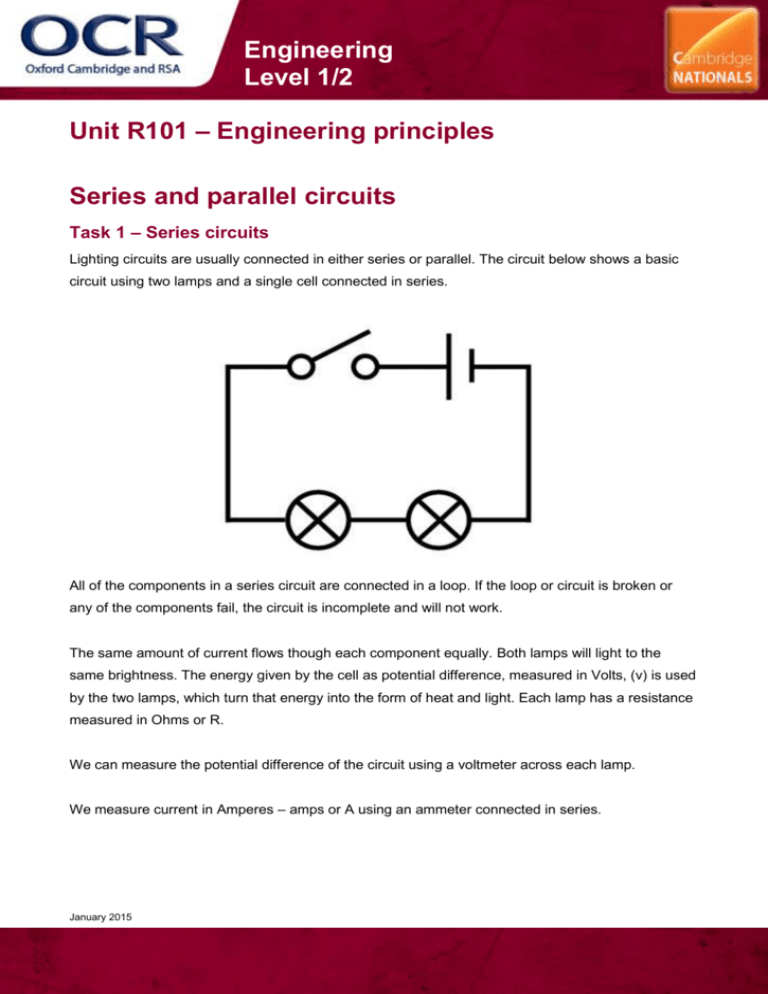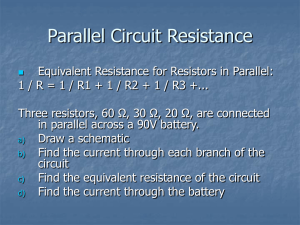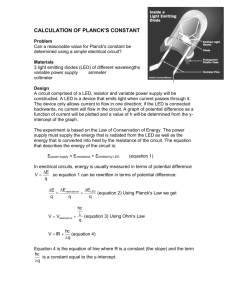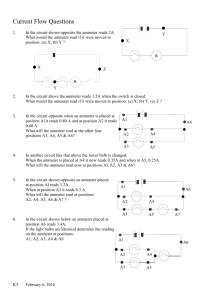Series and parallel circuits
advertisement

Engineering Level 1/2 Unit R101 – Engineering principles Series and parallel circuits Task 1 – Series circuits Lighting circuits are usually connected in either series or parallel. The circuit below shows a basic circuit using two lamps and a single cell connected in series. All of the components in a series circuit are connected in a loop. If the loop or circuit is broken or any of the components fail, the circuit is incomplete and will not work. The same amount of current flows though each component equally. Both lamps will light to the same brightness. The energy given by the cell as potential difference, measured in Volts, (v) is used by the two lamps, which turn that energy into the form of heat and light. Each lamp has a resistance measured in Ohms or R. We can measure the potential difference of the circuit using a voltmeter across each lamp. We measure current in Amperes – amps or A using an ammeter connected in series. January 2015 Engineering Level 1/2 Draw the circuit again in the space below and insert an ammeter at an appropriate place in the circuit. Then add voltmeter to measure the potential difference across one of the lamps. Task 2 – Parallel circuits Parallel circuits have components connected in parallel with the power supply and components are connected in parallel with each other. If one of the lamps fails, the other will still work. The current has more than one path to take. The amount of current flowing is larger and the resistance is in the circuit is lower. The current that flows through the circuit is shared between the components. January 2015 Engineering Level 1/2 In the space below; draw a parallel circuit using the same components used in the series circuit. In the space below, give 2 advantages of using a parallel circuit. Task 3 Assume the cell gives a voltage of 1.5v and the lamps have a resistance of 1 R each. Use Ohms law to work out the total current that would be shown on the ammeter in the series circuit. Use V = I x R where; V = Potential difference and I = amps, R = Resistance. January 2015 Engineering Level 1/2 The circuit uses just one 1.5v cell. When more than one cell is connected in series, the total potential difference is the total of the sum of their potential difference. Add another 1.5v cell in series and work out the total current in the circuit. See what happens to the amount of current flowing in the circuit. You can also experiment by changing the values of the resistance of the lamps to practice working out the current values. The current flowing through the circuit is the same in a series circuit wherever the ammeter is placed in series with the circuit. In a parallel circuit, the measure of current flowing will depend on where the ammeter is placed. January 2015 Engineering Level 1/2 Both lamps used in the circuit above are identical. Ammeter 1 reads 1.5A State what ammeters A2 and A3 would each read. January 2015










